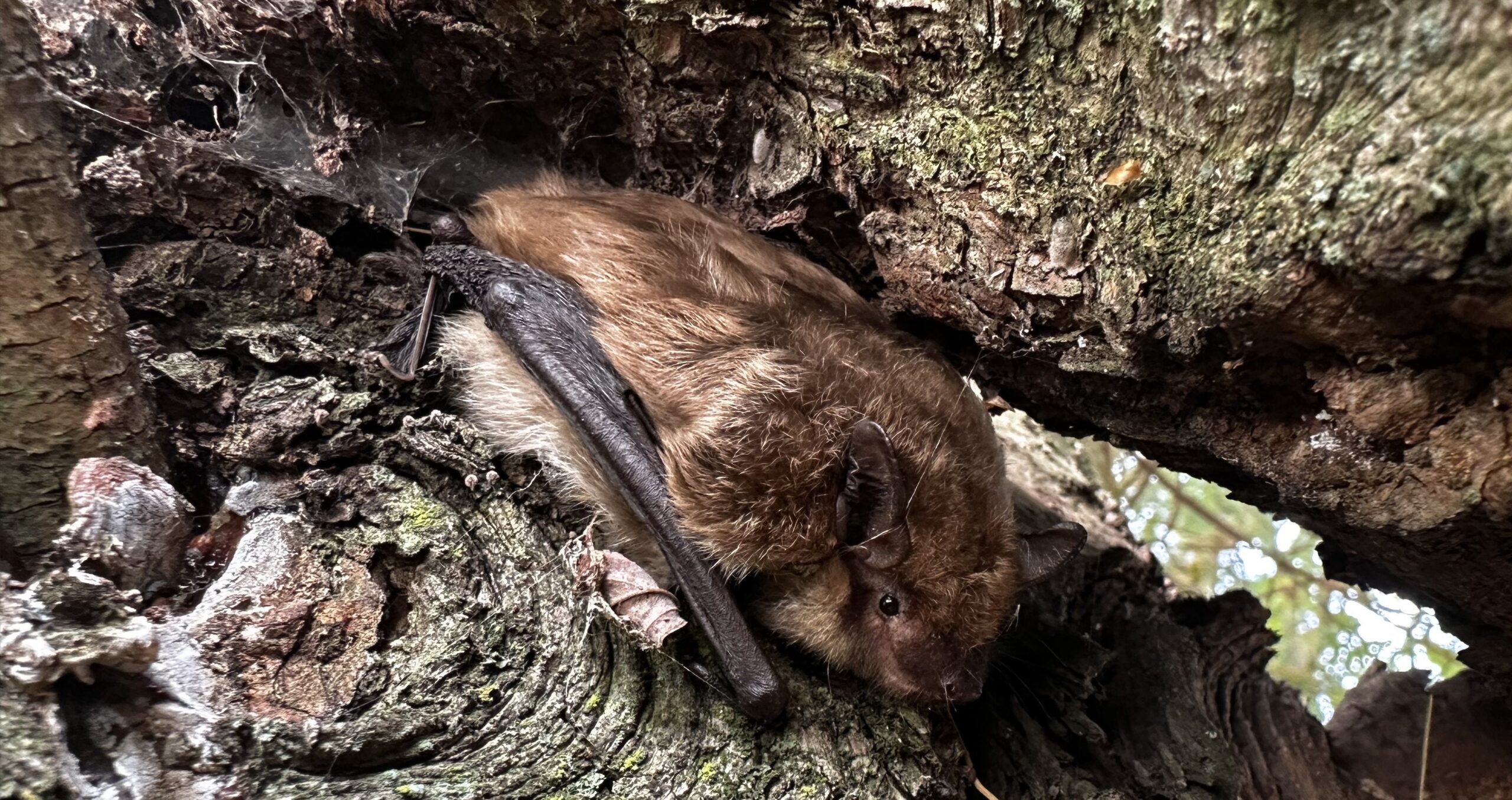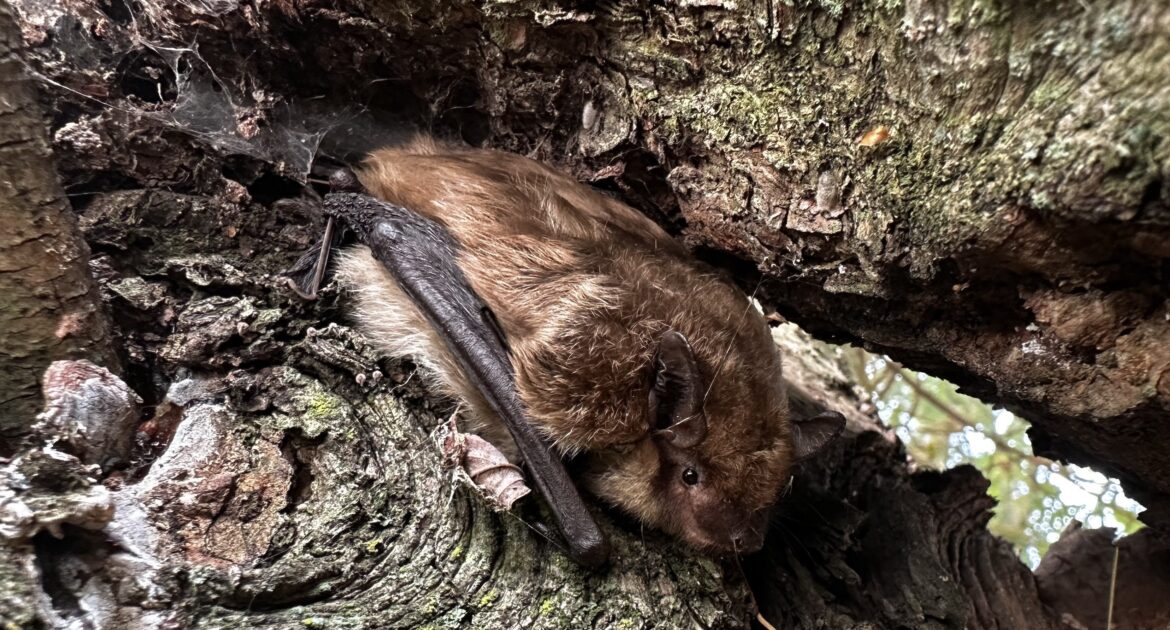When thinking of Pittsburgh’s wildlife, you might picture deer in Schenley Park or squirrels darting across your yard. But what about bats? Many people assume that bats only make their nightly appearances when the sun sets, but their behavior is more complex than that. Knowing their habits is crucial for Pittsburgh homeowners, especially those navigating bat-related challenges. At Skedaddle, as your trusted resource for humane Pittsburgh bat control, we’ve gained valuable insights into bat behavior patterns. These nocturnal creatures play a significant role in our ecosystem, yet they can also create issues when they decide to roost in your home.
We’ve put together this guide to clear up common misconceptions about bats, explore their nighttime activity, and provide practical tips for safeguarding your property.
Bats And Their Nighttime Activity
Bats are indeed most active at night, but they rarely wait for complete darkness to emerge. Most species, including some seen here in Pittsburgh, start flying during the twilight hours. You might spot them during a late evening at PNC Park as they skim through the air hunting flying insects like mosquitoes. This is the time they rely on their highly advanced echolocation abilities to pinpoint prey, such as moths and beetles.
- Bats are natural night hunters but don’t follow strict schedules.
- Their routines are influenced by environmental cues like fading daylight or the rising moon.
- The goal is to maximize feeding opportunities.
- They aim to minimize exposure to predators such as hawks or owls.
However, staying out solely at night has its exceptions. When food supplies dwindle or temperatures drop too low, bats may adapt and be spotted earlier or later than usual. Here in Pittsburgh, especially during seasonal transitions, we notice this pattern in their behavior. Understanding these slight variations in their habits helps us approach bat control in a more sensitive, effective way.
Why Noise May Happen During Daytime
Even during the day, you might hear scratching sounds from your attic or walls, leading people to wonder if bats are truly nocturnal. Those noises don’t mean the bats are active but rather resting in their roosts. Bats require a safe and quiet space during the day to recover after their nightly hunt, which makes attics, eaves, and other warm spaces in cozy Pittsburgh homes an attractive roosting site.
Where Bats Roost
Did you know bats roost in diverse locations, from natural caves around Pennsylvania’s wooded regions to the attics of Pittsburgh homes? Our urban landscape, with structures offering consistent temperatures, makes it even easier for them to settle in.
When bats find their way inside homes, they look for specific spots that mimic the cozy crevices of natural habitats. Common places we find bats’ roosts include:
- Attics with easy access points along rooflines
- Chimneys where gaps or openings have been left unsealed
- Vents and soffits offering warm, protected spaces
Additionally, once established, bats are incredibly loyal to their selected roosts. They often return to the same location each year unless intervention occurs. For Pittsburgh homeowners, this can result in accumulative damage or contamination over time.
What Attracts Bats To Residential Spaces
- Warmth: Bats need stable, warm environments, especially during the cooler months.
- Safety from Predators: They seek places safe from hawks and other predators that might pose a threat.
- Accessible Entry Points: Holes as small as a dime along your roofing or siding give bats easy access to your home.
If bats are roosting inside your property, acting quickly is crucial to prevent further damage, contamination, or potential health risks.
Bat Behavior Patterns During Different Seasons
Understanding seasonal variations in bat behavior can help Pittsburgh homeowners better protect their homes. Here’s a breakdown of what these changes may look like locally throughout the year.
Spring
As temperatures rise, bats awaken from hibernation and emerge from their winter roosts. After months of living off stored fat, they need as much food as possible and begin their nightly quests for insects. Additionally, this is when females prepare to give birth, making your attic a prime nesting location for new mothers.
Summer
By June and into early August, bat colonies are in full swing! Mother bats, during this baby season, raise pups that cannot fly on their own just yet. Disturbing bat roosts now could lead to orphaned pups, so handling any issues during this time requires extra care and sensitivity.
Fall
Fall serves as the perfect opportunity for roosting bats to prepare for the hibernation period ahead. With insects becoming scarce, they consume as much as possible to build fat reserves necessary for the long winter ahead. It’s also one of the two windows of opportunity for humane bat removal, as all offspring are flying on their own.
Winter
Once winter weather settles in, bats go into hibernation. Left undisturbed, they remain quiet. If you hear unusual noises during this time, it’s likely another type of animal seeking shelter.
Tools To Discourage Roosting
To minimize the risk of bats using your Pittsburgh home as their roosting spot, homeowners need to take proactive measures. Still, it’s important to approach these steps with a focus on humane practices, as bats play an essential role in controlling insect populations.
- Seal Off Entry Points
Inspect your home’s roofline, vents, and chimneys for any gaps or holes larger than 6mm. Sealing these entry points helps block access to bats scouting for spaces.
- Chimney Caps
Install caps over chimneys to prevent bats from entering. Choose a properly ventilated model to allow air circulation while keeping animals out.
- Bat Houses
Encouraging bats to live nearby—but not inside your home—is doable with the installation of bat houses. They provide a suitable habitat while keeping bugs under control outdoors.
- Regular Maintenance
Trim back overhanging branches near your rooftop, as they offer easy access to adventurous bats looking for shelter.
- Ultrasonic Deterrents
Ultrasonic deterrents are an innovative tool designed to keep bats away from your property. These devices emit high-frequency sound waves that are unpleasant to bats but inaudible to humans and pets. When strategically placed around your home, they act as an effective, humane solution to deter bats without causing them harm.
Skedaddle’s Solution For Pittsburgh Bat Control
Whether you’re hearing soft squeaks or scratching in your attic during the evening, or you’ve spotted a lone bat near your home, our team is here to help. At Skedaddle, we use humane and effective techniques to remove bats and protect your home for the long-term. With over 30 years of experience, we have the expertise to identify every potential entry point and provide solutions backed by a lifetime warranty.
Call Skedaddle today for professional support in reclaiming your space with the care and respect wildlife deserves. Don’t wait until the next “bat season” starts! Schedule a consultation with us now and enjoy peace of mind year-round.




